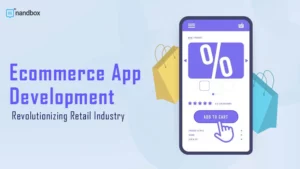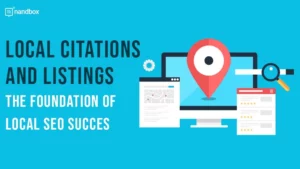Coming up with an idea for a mobile app is challenging. But it is by no means the only challenging part of app development. Before you even start thinking about how you are going to create the app, you need to research the market. It doesn’t matter how great your app idea is; you need to find out if there is an audience for it. And while you’re doing this, you will also discover what features potential users want in an app like yours.
There’s little sense in creating an app that nobody needs or that doesn’t do what users want it to do. One of the main reasons people use certain apps is because they address specific problems experienced by their users. This might mean making shopping easier for busy people or helping people become fitter and healthier. In other cases, it might mean making appointments and bookings is easier. Or it just makes it more convenient for friends and family to communicate with each other and swap information.
Done right, app market research is going to help you validate your idea by showing you if there is an audience. If there is an audience, market research will help you identify and understand their needs. And this helps you shape your app into something that truly meets the needs of users. Finally, app market research will also help you figure out the best strategy for your app. From how you market it to its future development.
With nandbox, developing your mobile app becomes one of the easiest tasks. But, as powerful as it is as a no-code app builder, it can’t help you with your market research. In this guide, we explain how to carry out app market research and what to do with the results.
Why Is Market Research So Important?
Market research is going to help you:
- Confirm that there is a need for your app.
- Understand your target audience: what problem are they experiencing that your app will address, and what would they expect from an app such as yours?
- Identify who your competitors are, allowing you to define how your app will differ from theirs.
- Create the framework of your marketing strategy.
You might believe your idea for an app is strong and unique and that there is a market need for it. But you will only be able to confirm this through market research. Without app market research, you could end up wasting time and money developing an app nobody wants to use. Forcing you to either abandon the app or redevelop it. Carrying out app market research can involve a lot of extra work. But you can use what you learn from the exercise in multiple stages of your app’s lifecycle. from early development through launch, marketing, and future updates.
Start by Defining Your Target Audience
Market research is going to help you better understand your target audience. But first, you need to define your target audience. Saying that your app is for everyone is not enough. You need to narrow it down to groups of users based on:
- General demographics:
- Age
- Gender
- Location
- Marital status
- Occupation and income bracket
- Psychographics:
- Hobbies
- Behavior
- Lifestyle choices
- Personality traits
- Spending habits
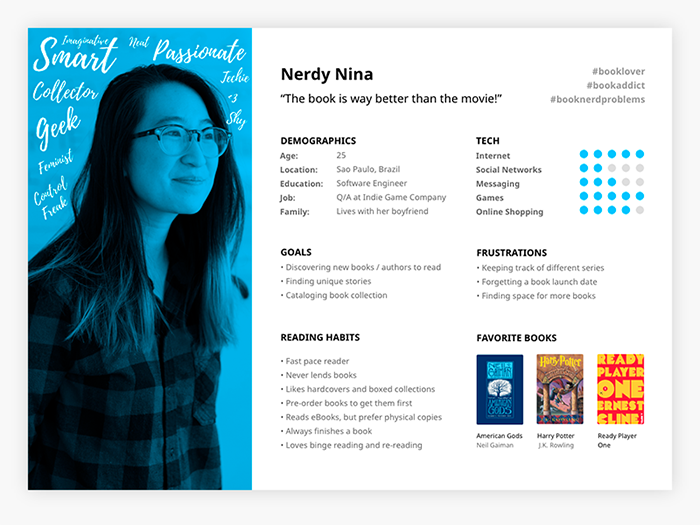
Nerdy Nina is a great example of a persona created for a book suggestion app. They have limited goals and frustrations related to those related to reading, as have activities and interests—shown as reading habits. Personas you create before carrying out market research will use your assumptions of your target audience. Only after your market research will you be able to refine them.
Personas are not only useful for reminding you of user pain points your app needs to address. They are also helpful in shaping your marketing strategy, so you know which features to highlight and what channels to use. When during this research you discover your audience belongs to the ISFP personality type, you can emphasize features that appeal to their creativity and choose visually driven platforms to reach them.
The Different App Market Research Methods
Certain methods of market research can be partially automated. But others require your involvement from start to finish. If you have the budget, you can hire an agency that specializes in market research. If you’re bootstrapping your startup and app development, this probably won’t be an option.
The best approach then would be to first familiarize yourself with the different app market research methods. Then focus on those that require the most resources and time. You can do things like source data from third parties after hours and study results from online monitoring.
Surveys & Focus Groups
A very traditional approach to market research but still one of the best approaches to start with. Surveys and focus groups are going to help you understand your target audience better—and refine your personas.
Use Zonka Feedback, Google Forms, SurveyMonkey, Typeform, or JotForm to create surveys. Instead of simply sharing the survey URL on social media and other public sites, try to recruit participants yourself. Post messages on relevant websites and social media, If you’re hesitant about diving into the top survey platforms, there are alternative options available. These alternatives offer similar features and functionality to SurveyMonkey and Google Forms, allowing you to create surveys with ease. Whether you’re looking for a more budget-friendly option, these alternatives ensure you can still conduct effective surveys without committing to the most popular platforms immediately. If you’re interested in an alternative to SurveyMonkey, you’ll find several options that suit your needs. Let’s take a look:
- Ask for participants in the age bracket your app is targeting.
- You can also limit participants based on location and certain lifestyle attributes.
- Ask for people who use, or have used, certain apps that are similar to yours. If your app relates to events, you want people who have used online event services to complete your survey.
- However, don’t exclude anyone who has never used similar apps. They can give insights into why some people might not use your app.
- If your app is going to be part of your current business, get some of your customers to participate.
- Offer an incentive. This might be early access to the app or an exclusive discount.
Ideally, you want people who are willing to complete several surveys and be part of a focus group later. Your survey(s) should be short; it shouldn’t take longer than 10 minutes to complete. Use open-ended questions that responders cannot simply answer with a yes or no. Given today’s technological refinements, you could stand out by using advanced AI surveys that provide a less boring experience with their interactive elements.
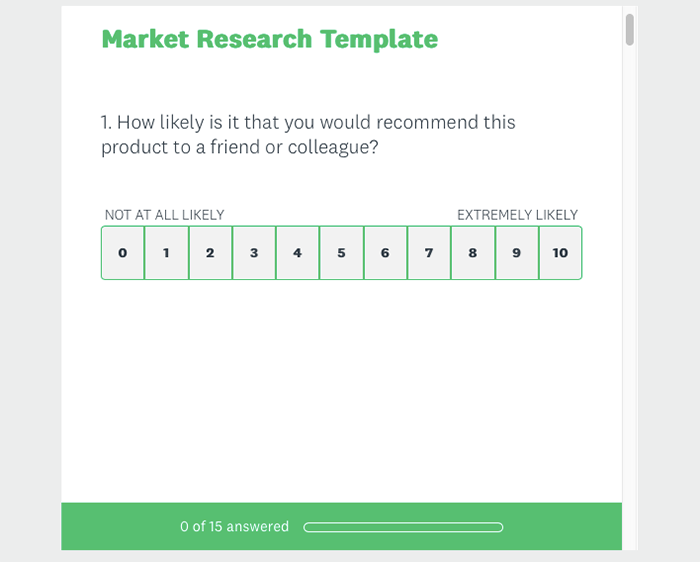
And don’t use family, friends, or employees who may struggle to be impartial with their responses.
Similarly, you can use focus groups to refine personas and understand your target audience. But they can also be useful later for refining the UX of your app and for usability testing. The advantage of focus groups is that each question asked can also lead to revealing discussions. Microsoft Teams and Zoom make it easier to run remote focus groups that don’t inconvenience participants too much.
Online Listening & Monitoring
You can use online listening and monitoring for:
- Insights into your target audience and building out your personas.
- Identifying potential participants for surveys, focus groups, and even beta testing your app later.
- Discovering the need for your app. From common pain points to user dissatisfaction with competing apps.
- Identifying trends within your target audience that could influence the future development of your app.
- Identify competitors you might not have been aware of.
- Observing competitor activity and public sentiment of competitors.
Tools such as Hootsuite, Buzzsumo, Mention, and Awario all make it easy to automatically monitor the web for keywords. Your keywords could be anything from your brand name, to that of competitors, and more. Outside of these tools, you can also use Discord and Reddit to find relevant online discussions.
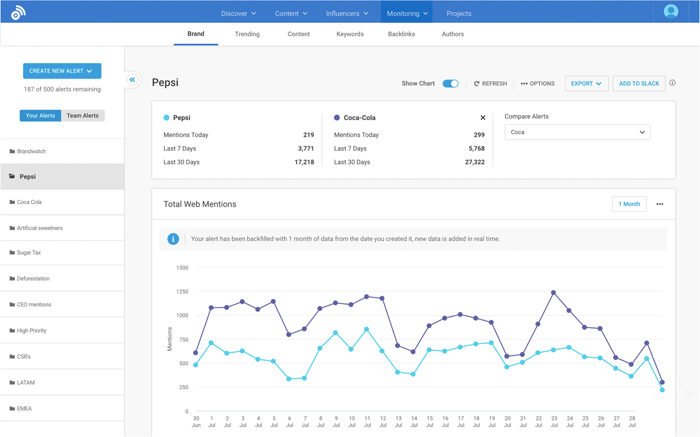
And you can implement online listening and monitoring before you’ve even compiled rough user personas. A lot of online commentaries is unprompted, so it can be more revealing and honest than other forms of research. It can, however, be quite noisy in the beginning. As you refine the keywords and brand names you are monitoring, you’ll find it easier to sift through the results.
Source Relevant Data
The internet has made it easier to source valuable data that assists with app market research. For pure app-related data, Data.ai and Business of Apps provide a wealth of data on app categories, the app marketplace, and more. You can use the data to:
- Validate your app idea.
- Gather insights relating to market size for your app.
- Help you refine your target audience.
- Decide which platform to focus on or prioritize.
- Compile accurate profiles of competitors.
- Reveal customer behavior and demographics for similar apps.
Much of the information from Business of Apps is already compiled into reports, but what is freely available is limited. Most reports are only available through purchase. Data.ai offers a number of different solutions, including custom subscriptions. But the data you would have access to is extraordinary for every stage of app development.
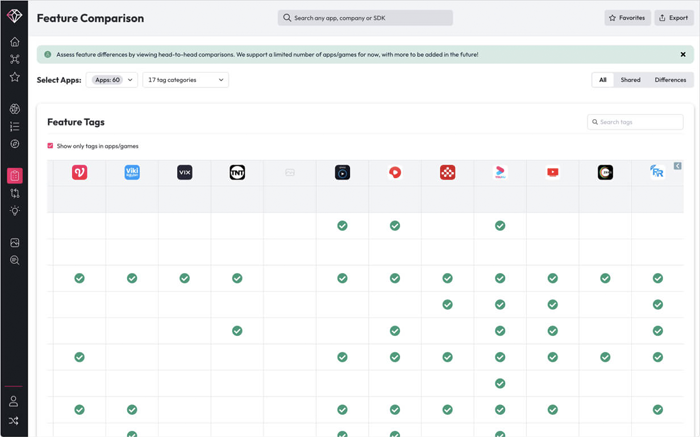
For data and insights into a much wider variety of topics, turn to Statista, the Pew Research Center, Gartner, and Gallup. Again, getting access to some reports and data does require a subscription. But you will still find plenty that can be accessed for free. Although the data and insights rarely relate to the app marketplace, they can still provide valuable information.
Most countries have a Bureau of Statistics or similar departments that can also provide local demographic data.
Competitor Analysis
With more than 5 million apps listed on the two major app stores, a completely unique app is unlikely. And as soon as you started formulating your app idea, you would already have started to identify competitors. And competitors don’t need to have an app that is identical to what you are working on. They don’t even need to have an app to be a competitor.
At the simplest level, competitors are companies and organizations from the same industry, whether they have an app or not. It is about anyone with a similar target audience. Once identified, you can then look at anyone with an app similar to yours. Similar doesn’t mean identical.
The app doesn’t need to have all the features you are planning on including. Look at apps that appeal to a similar target audience, and apps with at least one similar feature.
As mentioned earlier, you would have identified some of these as you were developing your app idea. But you will identify more as you carry out your market research.
Things to look for when analyzing your competitors include:
- Their business model & marketing strategy.
- A rough profile of their users: location, preferred platform (iOS or Android), pain points, etc.
- All the features of the app and the user problems they solve.
- Performance history: revenue, profit, monthly downloads, active users, etc.
Apptopia is a great tool for sourcing a lot of this information, but it is too costly for many app developers. But you can still find great industry insights on their blog.
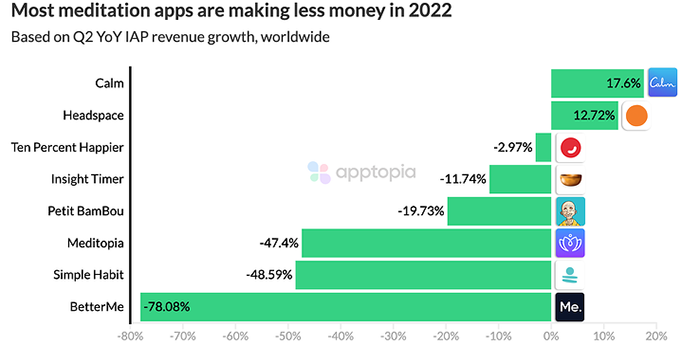
Data.ai and whatever tool you use for online listening and monitoring will also be useful here. The idea behind identifying and analyzing competitors isn’t just to know who you are competing with. It also allows you to work on differentiating your app. Discovering what you can do better, and what you can offer that they do not. This will also benefit you when marketing your app.
Execute a SWOT Analysis
SWOT is an acronym for Strengths, Weaknesses, Opportunities, and Threats. And a SWOT analysis is a powerful method for comparing your business and app to that of your competitors. But it also highlights opportunities for you to focus on.
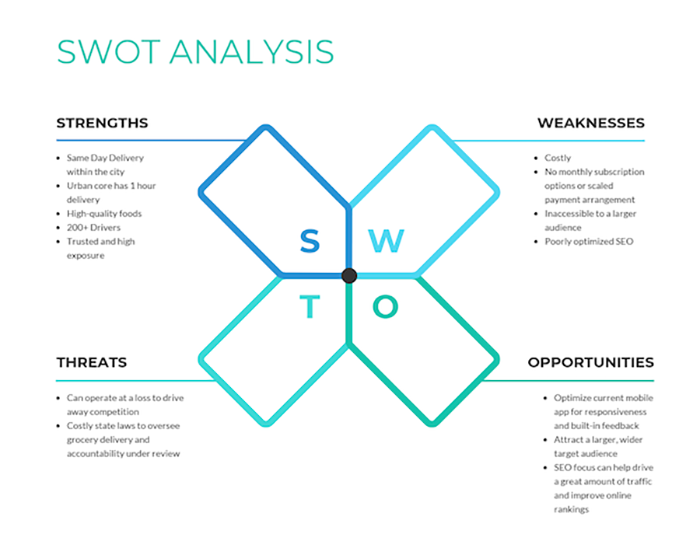
What to look at for each element includes:
- Strengths – start by outlining your app’s goal. Then define your unique selling proposition (USP) and list your advantages and what makes you different from your competitors.
- Weaknesses – where are you vulnerable? What resources are lacking, and what features can you not implement now? What can you improve in the short, medium, and long term? Focus on things you can change and improve.
- Opportunities – some of your weaknesses are also opportunities. But don’t look only at your weaknesses. Look too to your competitors’ weaknesses, along with untapped markets and users.
- Threats – consider anything that could negatively affect your business and app. From changes in the market and economy to new competitors. Don’t neglect to consider current competitors making changes that increase their threat to you. In the same way Meta has changed Facebook and Instagram to grab market share from Snapchat and TikTok.
You can use a SWOT analysis in multiple areas, from your initial market research to marketing and growth later.
Compile, Study, and Apply the Results
There is a strong possibility that your market research will reveal flaws in your original app idea. But don’t be put off by this. That is one of the main reasons for carrying out app market research before you start developing anything.
But you should also avoid making any changes to your app idea until you have completed all your market research. Once you feel you have enough data and information from your app market research, compile it all into one document. Work through it all methodically, making notes as you go. Only then should you start making relevant changes to your original app idea, which could be:
- Revising who the target audience is including locations where your app will be available.
- Adjusting the goal of the app, along with adding and removing features.
- Modifying the planned layout of your app, consolidating certain screens, and shifting the navigation order.
- Adjusting your business model, which may include changing the monetization strategy for the app.
App market research isn’t an exact process. Once you launch your app, you are likely to learn more about the market need for it. But market research should help you get a better understanding of the market and your competitors. And all the data and information you gather will also help with your marketing strategy. Both while you are developing the app and once you launch it.
App market research is an essential part of the app development process. Whether you are creating the app yourself, using an outside developer, or using nandbox. With nandbox, not having any app development experience is not an obstacle to creating your own app. This powerful no-code app builder allows you to create a fully native app in minutes. And with hundreds of features, you can easily add, you can create an app for any industry and use it.




